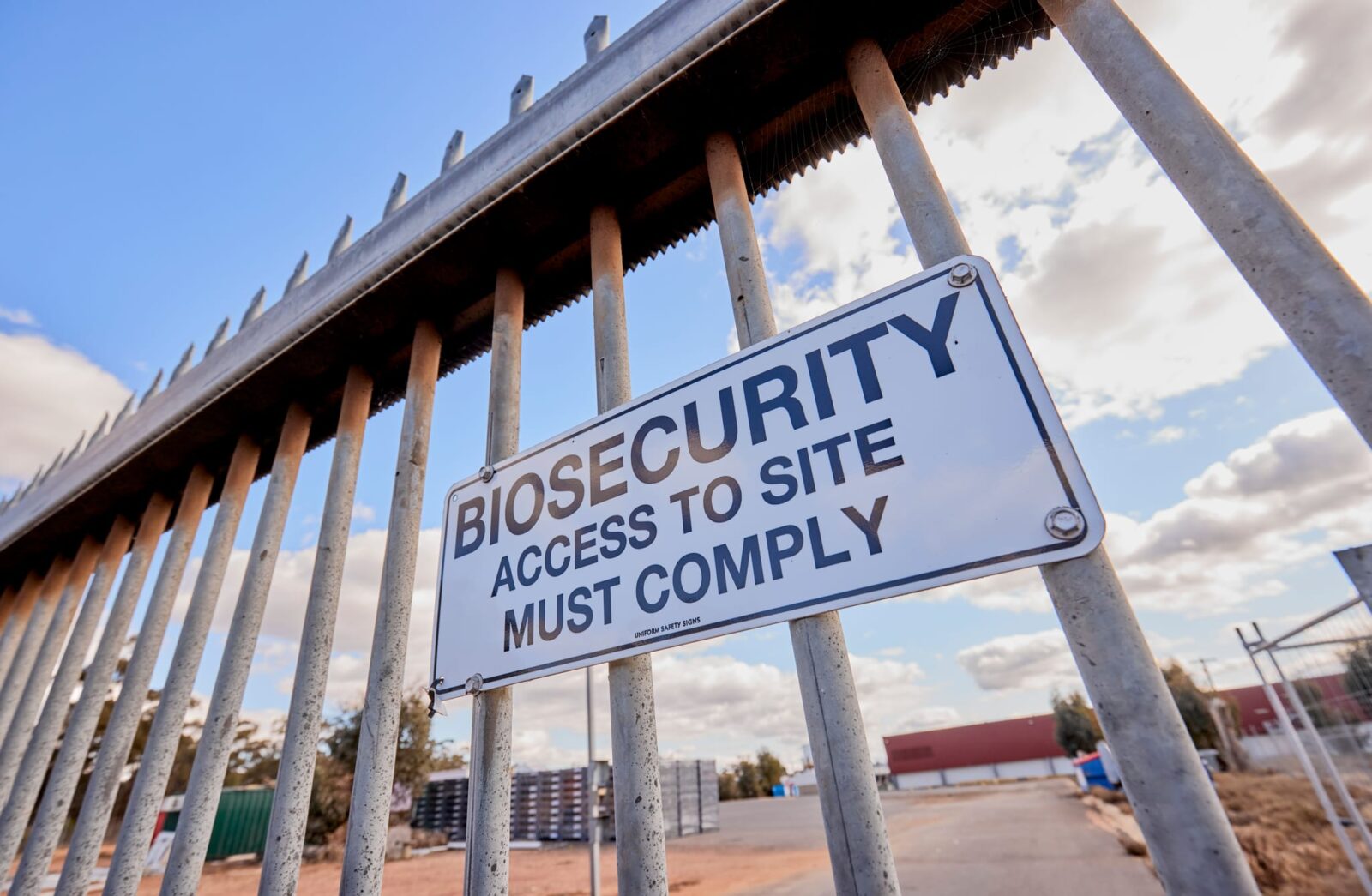National Strategy launched to connect Australian students with Food and Fibre Education
 CHICKEN MEAT / Tuesday, 21 January 2025
CHICKEN MEAT / Tuesday, 21 January 2025
Protecting chicken meat with an innovative biosecurity solution

As biosecurity threats increasingly overshadow Australia’s agricultural landscape, Australian biosecurity technology company ExoFlare and AgriFutures Chicken Meat Program have been working together to address the rising biosecurity threat landscape that is facing Australian chicken meat producers.
Central to this mission has been the development of a unique biosecurity risk assessment solution which helps producers to stop biosecurity threats at the farm gate. ExoFlare has designed this tailored solution specifically to address the challenges faced by chicken meat producers and growers.
Tailored biosecurity solution for the chicken meat industry
Chicken meat is Australia’s most consumed protein, but the industry faces unique biosecurity threats due to significant movement of people and vehicles between production sites, a rapid production cycle, and considerable vulnerability from external threats such as wildlife.
While the industry already has robust agreed protocols around biosecurity, there has been a growing need for a digital solution to improve industry’s ability to manage existing risks and detect emerging risks sooner.
Founders of ExoFlare, Adrian Turner and Chris Aitken, aimed to meet this need in the chicken meat industry after successfully developing a farm visitor biosecurity risk assessment solution with Australian Pork Limited (APL) for the pork sector, and a customised solution for the red meat sector in collaboration with Meat and Livestock Australia (MLA).
“The best biosecurity outcome for Australia’s chicken meat industry will come through an integrated biosecurity risk platform that allows seamless reporting, rapid detection and response, and fast recovery,” stated ExoFlare co-founder, Chris Aitken.
The first module ExoFlare developed for the chicken meat industry features a unique QR code check-in system for producers, displayed on site-specific biosecurity signs at the farm gate. This allows for the recording of information on all site visits.
The platform is available on mobile phones, tablets and desktop computers and can pre-populate fields for regular users for an efficient declaration and approval process, which takes 30 seconds on average to complete.
The data captured during the check-in process generates a unique biosecurity risk assessment for each visit and creates digital records of visitor movements, enhancing real-time detection and tracing of potential new risk points.
“The ExoFlare solution is highly adaptable and extremely agile, and we know that when threats like H5N1 become a reality, speed of response will be one of the most critical factors in determining how the industry fares,” said Mr Aitken.
The platform has already proven effective during the H7 avian influenza outbreaks in VIC, NSW, and the ACT, where farms using ExoFlare were able to immediately adjust the quarantine periods required for people coming from response control areas and restricted areas.
“We were able to include new quarantine questions related to the outbreak within hours of State Government notifications of control areas,” said Mr Aitken.
“While none of the infected premises were using ExoFlare, those nearby producers who were using the platform could download their digital visitor logs at any time for the Emergency Animal Disease (EAD) response, rather than manually collecting and providing paper records.”
Collaborative approach to managing biosecurity risks
The project has allowed ExoFlare to work directly with chicken meat producers, growers and processors to develop this tailored biosecurity solution, and although they’re just getting started, Mr Aitken says that his team are looking forward to the continued close collaboration with industry.
“We’ve enjoyed the opportunity to work closely with industry and provide a large number of chicken meat industry participants the chance to see for themselves that stepping up their biosecurity to a much higher level can be achieved in a cost-effective and easy way,” said Mr Aitken.
“We are at a point where we simply cannot afford to move slowly with developing biosecurity measures, and the commitment from AgriFutures has helped build biosecurity awareness and place a practical and tailored solution into the hands of industry,” he said.
With the Australian chicken meat industry contributing an estimated real gross value of production of $3.9 billion in 2024-2025, and an estimated retail value of more than $8 billion to the Australian economy, protecting the industry hinges on maintaining high standards of animal health and biosecurity.
“The introduction of ExoFlare’s innovative biosecurity risk assessment solution is a pivotal step in allowing the industry to manage biosecurity risks efficiently and ensure rapid responses to potential threats,” said AgriFutures Chicken Meat Program Manager, Sarika Pandya.
The collaboration also highlights improvements not only to the chicken meat industry’s resilience but also its overall contribution to food security and community welfare.
“Chicken meat has the smallest environmental footprint of all land-based meats, and as the most affordable source of protein, it is vital for sustainable food supply, food security, and national nutrition,” said Ms Pandya. “This technology ultimately benefits both producers and consumers, and safeguards the future of the industry.”
In light of the urgent need for better biosecurity measures, this project for the chicken meat industry serves as a catalyst for progress, ensuring that producers can effectively protect their operations and contribute to the sustainability and resilience of Australia’s food supply.
For more information about ExoFlare visit
Subscribe to receive more chicken meat industry news
Latest News
-
National Strategy launched to connect Australian students with Food and Fibre Education WORKFORCE AND LEADERSHIP / 21.01.25
WORKFORCE AND LEADERSHIP / 21.01.25 -
Supplementary feeding can build and maintain hives amid stress HONEY BEE & POLLINATION / 21.01.25
HONEY BEE & POLLINATION / 21.01.25 -
AgriFutures Rural Women’s Award celebrates 25 years of impact WORKFORCE AND LEADERSHIP / 21.01.25
WORKFORCE AND LEADERSHIP / 21.01.25 -
Industrial Hemp: Australia’s next sustainable super crop INDUSTRIAL HEMP / 21.01.25
INDUSTRIAL HEMP / 21.01.25






